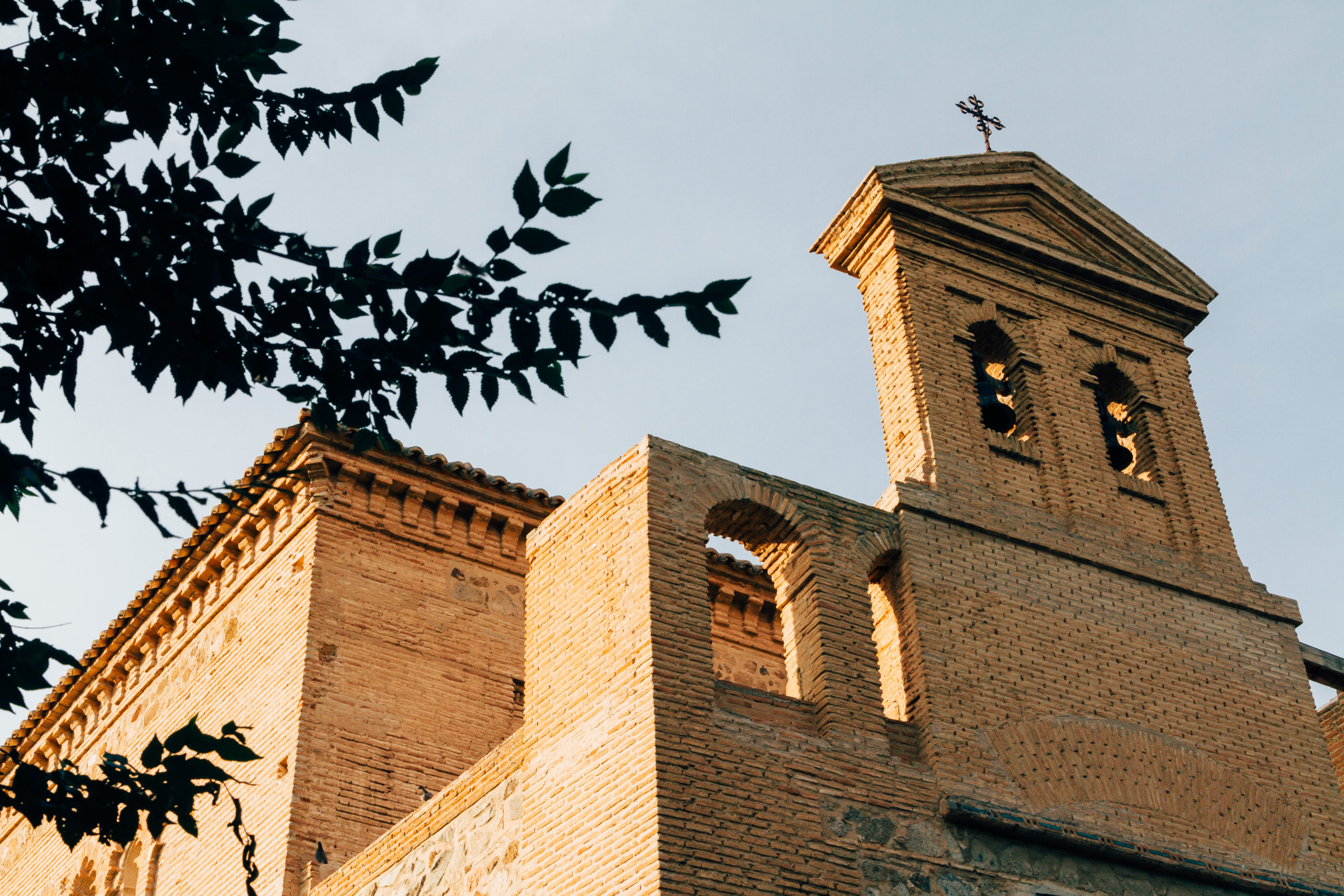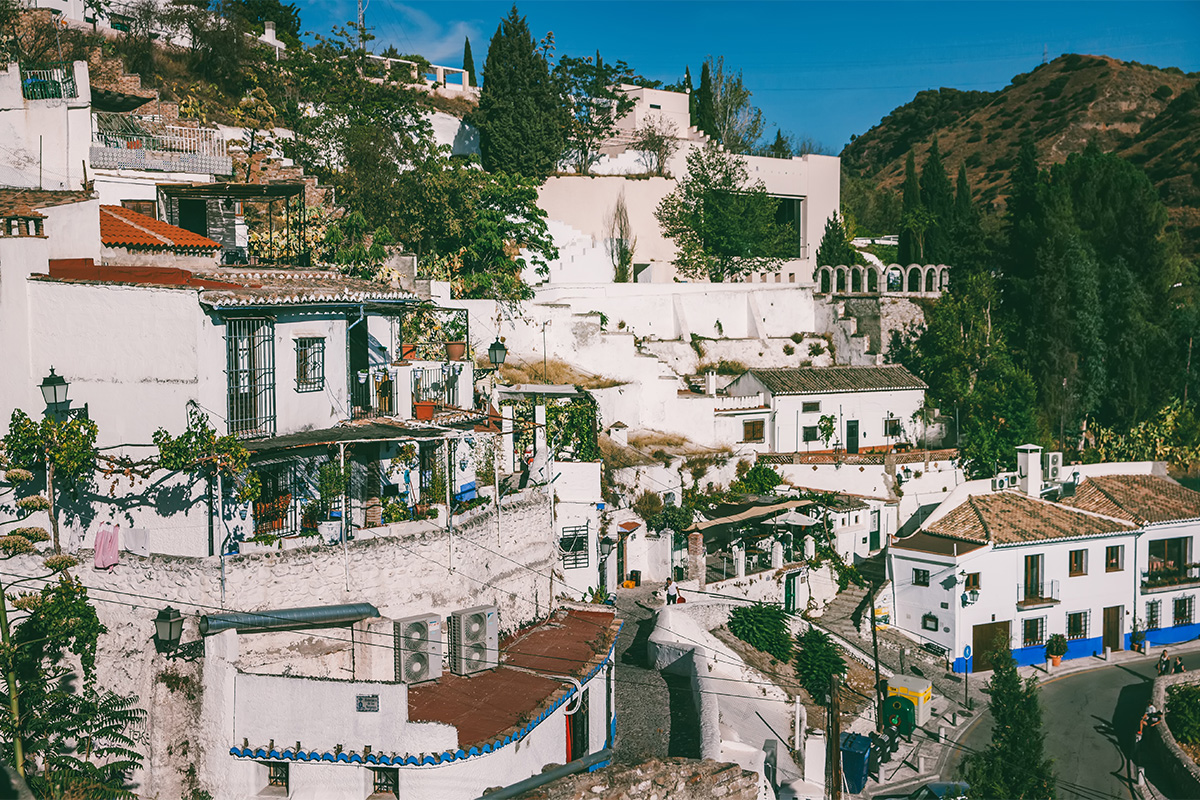On the third day of my study abroad in Spain, I asked my host mother if she was headed to Mass. I was only trying to make conversation that Sunday morning, but she got excited, asking if I, too, attended Mass. Reluctantly, I realized something that I had planned to keep secret by omission would now have to be said outright. I explained that I was Jewish, soy judía.
After clarifying that I was, in fact, sharing my identity and not, for some reason, referring to the green vegetable they call judías, there was a moment of silence. She stirred the pot that would be our lunch, absorbing the information. Finally she asked, without looking up, if I could still eat comida católica, Catholic food. Without bothering to explain the complexities of kashrut, which I did not practice anyway, I just said yes, and told her that one of the only differences is that my holy day is Saturday (a simplification of arguably criminal proportions).
In an attempt to rebuild our connection, I shared that my boyfriend was Catholic, at which she regained her normal animation and looked again in my direction, optimistically explaining how that was good, because we could go to my services on Saturday and his on Sunday. We never mentioned it ever again. I am completely convinced that in her almost 70 years of life, she had never met a Jew.
For the first time in my life, I was a Jew without community, in a land that was once filled with people like me.
When I got approved for study abroad in Spain this spring, I was ecstatic. My mother is an urban wanderer of Sephardic ancestry whose ancestors had been Sephardic Crypto-Jews before they lost, to time, any Jewish practices, retaining nothing but the knowledge that they were Jews. I was excited to rediscover the land from which my ancestors had been forcefully expelled some five hundred years ago. Their journey had led them from Spain through Holland, the Dutch Caribbean Colony of Curaçao, Puerto Rico and, finally, to the United States. I would immerse myself in its rich Jewish history, especially that of Granada, the city in which I would be living.

To my surprise and disappointment, the places I visited acted as if Judaism had ended with the expulsion in 1492. The few recognizably “Jewish” centers I visited turned out to be tiny museums or converted into churches. My excitement to see the famous Sinagoga del Tránsito in Toledo was squashed when I was met with little more than a distant view of the one remaining decorative wall, in a lonely room that once held pews full of people.
I felt then, as in other moments, forgotten, almost cheated out of the grand remembering such a grand history deserved. It was as if the Catholic monarchs had succeeded in their goal of ridding Spain of the Jewish community and, thus, the memory of Judaism altogether. I had hoped for, but not expected, pockets of present-day Jewish community. What I had expected were monuments to a rich culture: extravagant old synagogues, or, at the very least, contemplative museums. Instead, I found plaques set out for foreign tourists.
Not only were there no Jews, but also, the glorious history that I thought would compensate for the lack of community seemed forgotten.
In Granada, once called “Garnata of the Jews,” I was a remnant soul of a forgotten past. At 21, I felt like a relic for merely existing — as if I belonged more to the museum exhibits than to the living, breathing world.
It wasn’t until I arrived that I realized what it meant for there to be no community.
I am a New York Jew, the Jewish daughter of two unabashed New Yorkers, and I grew up in a Jewish and Catholic suburb in Orange County, New York, where I got my holidays off and was part of a middle school “Jew Crew.” I stayed in New York for college, moving to the Bronx and devoting my academic time to studying New York’s Jewish history. I also taught at Temple Emanu-El, the city’s shining jewel of a synagogue. In college, I remained immersed in the Jewish community which had taken me in as a student and an educator, and kept me grounded when other aspects of my life became unmoored. Living on my own in my Bronx apartment, I felt more connected to my religion than ever. As I lit my menorah in the winter, I thought about the one, two, even three generations of Jews before me who would have, just blocks away from where I lived, been muttering the same words, feeling the same light. I felt, to paraphrase the great Paul Rudd, that I was not only practicing Judaism — I had perfected it.
All of this made me both excited to go to Spain and find new points of connection to my heritage — and worried about the experience. I knew what they told us Americans about European antisemitism. I planned to shed my Star of David necklace for the more ambiguous hamsa, though my Spaniard professor reassured me that it was not necessary — that, unlike in France or elsewhere in Europe, there was no antisemitism in Spain. Too shocked to reply in class, afterwards I remarked to my classmate that of course there is no antisemitism in Spain: There are no Jews to be antisemitic to! They kicked them all out in 1492!
But now, alone in a foreign country full of idealized ancestors but without a living Jewish community, I had to reconsider what it meant, here, to be Jewish. If community was synonymous with Judaism for me, then what was I as a Jew without community?
Ángel Pulido, an advocate for Sephardim in early 20th century Spain, called Sephardim españoles sin patria — Spaniards without a country. If Jews are a people in perpetual diaspora, then Sephardim live a double diaspora, expelled from a land they had lived in for almost 1,500 years. American Sephardim are displaced yet again: Most came to the United States after hundreds of years in adoptive homelands because of war or economic instability.
Within this triple diaspora, Sephardim and other Jews have created community wherever they have gone. And yet, I finally understand why my Crypto-Jewish ancestors gave up their religion in the end. Previously, my naiveite and idealism made me angry at them for not maintaining their traditions so that I could carry them on. Now I have forgiven them, for I understand.
It took my experience as a judía sin judería, a Jew without a Jewish community, to catch a brief glimpse of what it meant to start by scratch in a new place. I got a tiny taste of what it would take to build a completely new community in a foreign land. For the first time, I knew a kind of loneliness of the soul, disconnected from greater spiritual association. In coming to terms with the fact that my ancestors were dead — were merely the subject of plaques that were, like them, buried in the ground — I connected with them on a new level. Now I knew both their home and (a fraction of) their loss.
Most of all, I realized the value of the living community I did have.
So I come back from being apart from my New York Jewish community renewed to teach my students, to pray more regularly, and, most importantly, to interact with the people that keep Judaism, and its eternal flame within me, alive.



